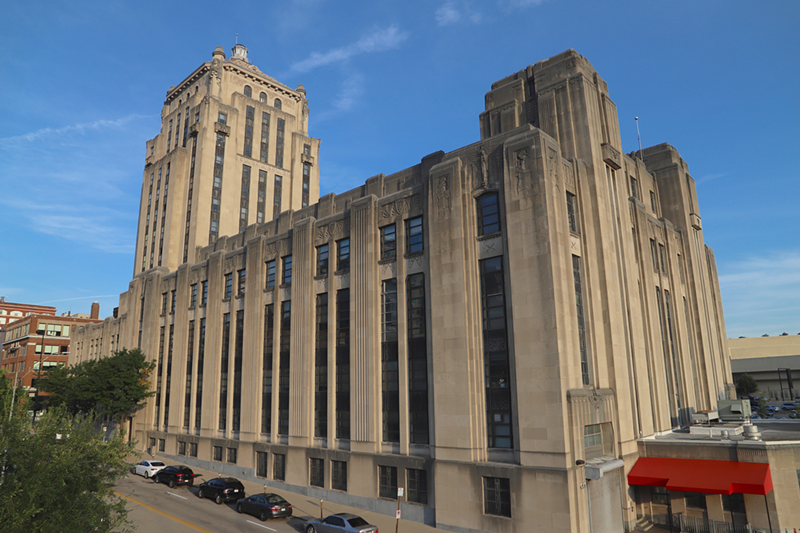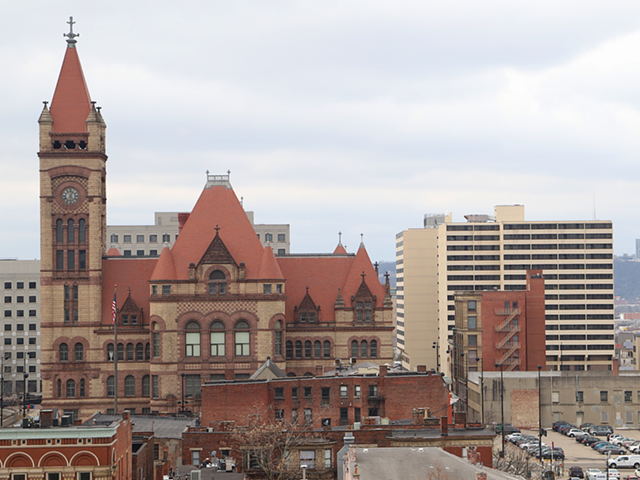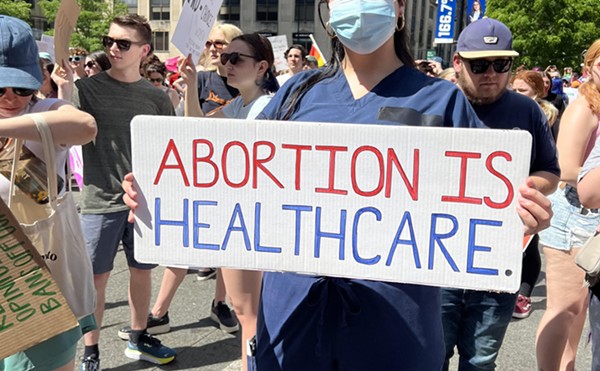This story is part two in the series Youth, Trauma, Trials, Time: a Deep Dive Into Youth and the Justice System. You can read the centerpiece story here and additional coverage here.
Like many counties across the country, Hamilton County faces a large, high-stakes challenge: how to serve and educate young people even as racial, ethnic and class disparities in and outside school districts, juvenile court and other systems continue.
But last week, 48 representatives from seven Hamilton County agencies met over the course of five days with experts tapped by Georgetown University to plan new ways to reduce those disparities and the overall flow of students into the juvenile justice system.
The program funded by participating agencies and the Haile Foundation, the Mayerson Center and Joining Forces for Children is a big deal, participants say. Over the course of follow-up meetings, the agencies will agree on a long-term project designed to address issues around equity, school discipline and diversion from the usual paths into the juvenile justice system. Georgetown will track that project’s success over time.
As CityBeat recently reported in a deep dive on the county’s system, understanding juvenile justice — and the racial and economic disparities that manifest in this county and others — means engaging with a complex set of interrelated systems.
In Hamilton County, the number of juvenile arrests and intakes into the system’s youth detention has dropped sharply over the past two decades. But racial disparities have proven harder to reduce.
Police are arresting far fewer youth than they used to — perhaps partly due to a national trend in falling crime rates — and Hamilton County Juvenile Court is locking up or sending away far fewer of them to state juvenile detention centers thanks in part to a series of diversion programs, court officials say.
In 1995, Hamilton County Juvenile Court sent 440 young people, most of them African-American, to detention facilities run by Ohio’s Department of Youth Services. Last year, it sent just 60. It also transferred 130 young people to the adult justice system via a process known as “bind-over” in 1995; last year, it transferred 33. Of those, however, 30 were black.
In a county where Census data says 30.3 percent of people under 18 are African-American, 81 percent of the more than 2,000 minors issued warrants through the Hamilton County Juvenile Court last year were black, according to data CityBeat obtained from the court — up from 75 percent in 2015. And 75 percent of the 930 young people admitted to the county’s youth detention center in 2018 were black — though that’s down from 80 percent in 2015.
Few dispute the clear over-representation of black youth in the county’s juvenile justice system. And those disparities certainly aren't unique to Hamilton County — they're part of national trends involving race and the justice system in a country where the prison population ballooned from 500,000 in 1980 to more than 2 million by 2015 and in which black citizens are incarcerated at five times the rate whites citizens are according to data from the U.S. Department of Justice. Those trends extend to juveniles. While roughly 14 percent of the U.S. population under the age of 18 is black, data shows that 42 percent of children detained in juvenile justice systems across the country are black.
But that is just the start of the conversation. Why are so many more black youth arrested in Hamilton County? What happens to them when they enter the juvenile system? What roles do racial bias, socioeconomic factors and the trauma that can come with growing up without resources play?
Those are some of the weighty questions that local participants in the Georgetown program are wrestling with, specifically as they relate to local school districts.
Legal Aid Society of Southwest Ohio Managing Attorney Elaine Fink, along with Hamilton County Juvenile Court administrators and others, helped pull the county’s application for the program together. She says it’s a big opportunity to work on vexing systemic issues manifesting in Hamilton County and other jurisdictions around the country.
“These district and public systems are coming together to address those issues, to keep more students in school, to intentionally look at data on disproportionality of disciplinary removals, referrals to juvenile court, which are all tied into children leaving school, dropping out, getting pushed out,” Fink says. “We’re talking about wrapping around behavioral health services, issues of trauma, understanding implicit bias.”
Hamilton County applied via a highly competitive process to participate in the program and came out as Georgetown’s number one choice.
The program, run through the university’s Center for Juvenile Justice Reform, has been around since 2015. Generally, jurisdictions like Hamilton County would travel to Washington, D.C. to participate, but this year the program went on the road.
Shay Bilchik is director of the center at Georgetown. He says Hamilton County’s application for the program stood out because it included not just one school district or court, but an entire array of agencies. Hamilton County Juvenile Court, the Legal Aid Society of Greater Cincinnati, Cincinnati Public Schools, Northwest Local School District, Princeton City Schools, Hamilton County Job & Family Services and Hamilton County Educational Service Center, which supports districts in the county, are all participating, as are individual police personnel called school resource officers who are assigned to posts in each school district.
“We were looking at this application and saying, ‘This is a remarkable opportunity to move an agenda forward in a way that is somewhat unique,’ ” Bilchik says. “We didn’t get that kind of application from the other communities we considered. Not that they weren’t good applications — they are, and we’re going to work with some of those communities — but Hamilton County became our top choice because of that dimension.”
Bilchik also has praise for some initiatives the county juvenile court is already working on, including its partnership with Legal Aid called Kids in School Rule! That program helps address the educational needs of foster children and has had great success, he says.
“It is one of the most remarkable programs we’ve seen anywhere in the country in focusing on the educational needs of kids in foster care,” he says, touting the results the program has achieved. “If you can say that kids who experienced this program — who are in foster care — graduate at higher rates than the general population of students in a school district, then you’re doing something right.”
It’s not the first time agencies in Hamilton County have participated in the program. In 2015, Hamilton County Juvenile Court administrators, representatives from Northwest Local School District and Fink from Legal Aid applied for and were accepted into the program, travelling to DC to work with Georgetown experts.
A program at Northwest called the Student and Family Engagement (SAFE) Council emerged from that experience. That program looks to divert students in the district away from traditional court proceedings toward more holistic and individualized efforts to address behavioral and truancy issues. Each SAFE Council hearing includes a court hearing officer and clerk, but also a Northwest student services director, social worker, enrollment supervisor, truancy officer and sometimes the school’s principal and counselor.
Northwest Assistant Superintendent Darrell Yater says that program has moved the needle, keeping more kids in school and out of the formal justice system.
“Through that process, because we have all those people there who have access to records and information and services, we reduce barriers and fix the problem,” he says. “If there is a reason they’re not coming to school, we can remove the barrier and attendance improves. We also work with the students to make sure barriers to academic success are removed. Because we knew the powerful impact it could have, when Georgetown announced this year that they were willing to come to a community and have a broader regional impact, we were very excited to bring more people to the table. We have a lot of kids that we share across agencies and districts. How do we work together to reduce barriers?”
Cincinnati Public Schools Director of Positive School Culture & Safety Dr. Carrie Bunger also identified collaboration as a key goal of her district’s participation in the program. She says that CPS already has a number of programs it feels are making a dent in juvenile justice inequities and the number of young people who end up in court or detention. Those include the district’s Positive School Culture and Safety Department, behavioral health support for students and a mental health partner at each of the district’s 62 schools, efforts to avoid student suspension and expulsion in most cases, two diversionary programs and other programs.
But she says the district has more work to do, especially when it comes to working with the other agencies in the county.
“How do we truly and effectively communicate across the juvenile court, CPS, Job and Family Services and others so that we can impact the life of a child without so much red tape and barriers?” she asks. “We certainly have that in pieces, but everyone together in a consistent, clear way, I think we’ll need to continue to work on that.”
Bunger also says the district wants to expand how it carries out diversionary work.
“We also want to find ways of increasing diversionary programing,” she says. “That doesn’t just mean an unofficial docket instead of a student going downtown to juvenile court. It means what strategies and interventions can we put into place to divert students from going down that pathway, that school to prison pipeline. Whether that’s increased mental health services, increased social-emotional learning, increased behavior support —all of those pieces. It’s all of the interventions and what we can do better.”






